Battle of Winwick Pass
Registered Battlefield 31 January 2018
The English Civil War had an impact on Winwick: During the Siege of Warrington on 23 May 1643, Winwick Church and steeple defended by Royalists was eventually taken after volleys of Parliament musket fire, to which musket shot scars can be seen on the Church to this day. The more important English Civil War event occurred on 19 August 1648, known as the “Battle of Winwick Pass (or Red Bank)”. So important is this historic heritage asset, on 31 January 2018, Historic England granted the designation status as a “Registered Battlefield”, warranting the importance of international status, knowing, the Parliament stand of the main battlefield is under threat from development.
Why is “The battle of Winwick Pass 19 August 1648” of international importance?
Introduction
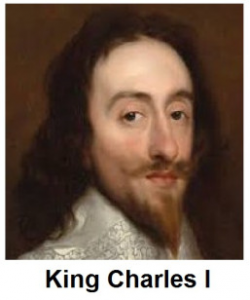
The English Civil War finally ended, King Charles having surrendered himself to the Scots Army, May 1646 at Newbury, the Scots moved the King to Newcastle. Here the English Parliament placed new ‘Propositions’, (first proposed, June 1642), to the King, regarding the King’s future role on governing the Kingdoms of England and Scotland, but, not acceptable to his Majesty. December, Charles was handed the same ‘Propositions’, this time with the Scots approval, but again Charles rejected. In January 1647, the Scots handed the King to the English Army, for failing to commit to the Covenant, and was taken first to Holmby, Northamptonshire.
Here discussions started between: King Charles; the Army commanders, Lord General Thomas Fairfax the commander of the Parliament Army, Lieutenant-General Oliver Cromwell, General Henry Ireton; the English Parliament; and the Scottish Commission, regarding the future role of his Majesty. August, the King was moved to Hampton Court, here the King started secret negotiations with the Scottish commission, at the same time the Propositions (again) presented to the King (again) rejected. Agitators in London threatened the King’s life.
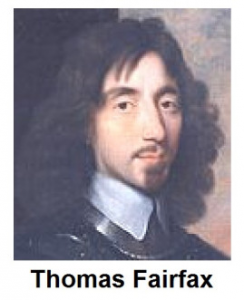
Charles feared for his safety, secretly left Hampton Court for the Isle of Wight on 11 November, but was discovered and imprisoned at Carisbrook Castle. Here Parliament presented the King, the “Four Bills” on 24 December, four days later Charles rejected. On the 26 December 1647, Charles agreed to the Covenant, signed the secret engagement treaty. Whereby, the treaty allows the Scots to invade England, if negotiations to restore his Majesty fail and the Parliament Army does not disband.
At 4am, 08 July 1648, the Scots Army of 4000 cavalry and 10000 infantry invaded England, commanded by the Duke of Hamilton, later joined with the English Royalist Army of 600 cavalry and 3000 infantry, commanded by Sir Marmaduke Langdale and the Irish Royalists of 1000 cavalry and 2000 infantry, commanded by Sir George Monro. The march south from Annan, to Carlisle, to Penrith, to Appleby, where at Hornby, Hamilton split the forces: Monro to Appleby; Langdale to Clitheroe; the Scots cavalry to ride towards Wigan; and Hamilton to march to Preston.
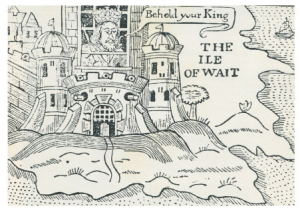
The Scottish invasion came to an abrupt halt at Preston on 17 August 1648. The English Royalists Army were defeated by a Parliament Army having assembled at Wetherby, marched on to Preston, with in all, 8600 cavalry and infantry, commanded by Cromwell. The remaining Scots Army of 8000 infantry and 4000 cavalry continued south to Warrington, in order to join Welsh Royalists under the command of Lord Byron. Hamilton having left the ammunition wagons at Preston, the Scots forced march south, in hot pursuit by Cromwell’s 3000 infantry and 2750 cavalry, lost nearly half of the Scots infantry before reaching Wigan.
Winwick Pass
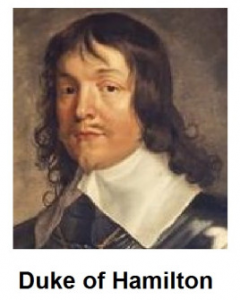
At midnight, 18 August, under a bright moon, Hamilton found the pass at Red Bank, between Newton and Winwick, amenable to stand against the encroaching Parliament Army. Hamilton ordered 3600 infantry, commanded by Lieutenant-General Baillie to defend the pass. While Hamilton and the remaining Scots continued to Warrington. Baillie having limited gunpowder, fire-power a concern, ordered his infantry: musket and pike to battle formation to best defend the weakest fronts:
- Right flank musket and pike along the south side of Hermitage Green Valley, together with a main Body of Pike supported by a Body of Musket at the ‘rise of the lane’;
- A main Body of Pike supported by Body of Musket on the ‘post road’ (A49); and
- Left flank of musket and pike at Cop Holt Wood above Newton Brook.
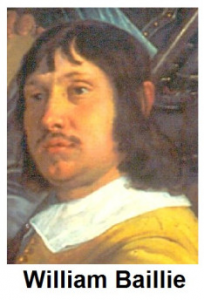 Sunrise broke to reveal the Saturday, what would unfold to be the day that changed the fortunes for England and Scotland, 19 August 1648. Baillie waited.
Sunrise broke to reveal the Saturday, what would unfold to be the day that changed the fortunes for England and Scotland, 19 August 1648. Baillie waited.
Cromwell after a nights rest, left Wigan early Saturday morning, to arrive at Newton, 3 to 4 hours later. To find the enormity of the Scots advantageous stand at Red Bank, well prepared, dug-in, using the lay of the land as being a part of their defence, ready for battle. Cromwell ordered his army to battle formation:
- Left flank with a Body of Cavalry and Infantry in Newton Park to the north of Hermitage Brook;
- The Forlorn Hope along the ‘post road’ (A49); and
- Right flank with a Body of Cavalry and Infantry above Newton Brook/Red Bank Mill area.
Cromwell faced conditions not conducive for battle: sun at its height, the brooks flooded from weeks of rain, use of the cavalry limited. Midday approached, Cromwell ordered the ATTACK!
The Battle 19 August 1648
The first three hours:
The Parliament left flank in Newton Park with repeated cavalry and infantry pike charges, with in-dispersed musket fire across the Hermitage Green Valley. Tried in vain to break the Scots right flank defensive stand on the southern side of the Hermitage Green Valley ‘rise of the lane’.
With simultaneous Parliamentary charges and repeated charges along the ‘post road’, to break the stand of Scots Pike, together with Parliament charges towards Cop Holt Wood Scots stand.
The Scots stand being resolute at the ‘post road’ front and especially at the ‘rise of the lane’ front in the Hermitage Green Valley due to the topography across the valley opposite Newton Park.
The Parliament Army retreated to regroup and discuss tactics: How to break the two Scots defensive fronts? The timely arrival of Colonel Thomas Pride’s Parliament infantry. Cromwell gained information from Local People, presumably confirmed by Scouts, discovered a way round from the east via Hermitage Green village. Cromwell prepared.
The next three hours:
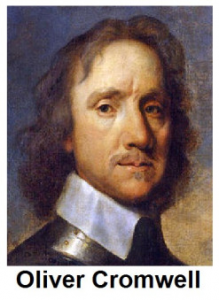 The next 3 hours would see the Scots defeated, the battle of Winwick Pass would end early evening. Cromwell having decided his tactics: Ordered two of the regiments of cavalry located in Newton Park to ride round to Hermitage Green village, here to divide: four troops to ride on to Winwick town to stop any Scots; and the remaining troops to attack the Scots ‘rise of the lane’ front in the Hermitage Green Valley from the east. Cromwell also ordered the Parliament army left, right and central flanks to attack the Scots stand.
The next 3 hours would see the Scots defeated, the battle of Winwick Pass would end early evening. Cromwell having decided his tactics: Ordered two of the regiments of cavalry located in Newton Park to ride round to Hermitage Green village, here to divide: four troops to ride on to Winwick town to stop any Scots; and the remaining troops to attack the Scots ‘rise of the lane’ front in the Hermitage Green Valley from the east. Cromwell also ordered the Parliament army left, right and central flanks to attack the Scots stand.
Mid Afternoon a body of Scots infantry officers on horse rode from Warrington to assist Baillie, but were immediately involved in cavalry combat at Winwick and captured.
The Parliament cavalry charged the Scots from the east at the ‘rise of the lane’ front in Hermitage Green Valley, together with a charge on the Scots defence at the lane by the Parliament army from Newton Park.
The Scots being attacked on two sides, broke and ran towards Winwick. The Parliament army in Newton Park having broken the ‘rise of the lane’ front in the Hermitage Green Valley charged across the valley, up the lane and joined the Parliament cavalry from the east, to charge on the south side of the Hermitage Green Valley to the Scots ‘post road’ front. In doing so, the Parliament Army overpowered the weakened Scots position on the ‘post road’. Many Scots were killed, many Scots fled to Winwick, eventually captured and held prisoners in Winwick Church.
Victory
Baillie with a regiment of infantry fled towards Warrington to make a hopeless stand between Longford and the North Gate of Warrington on the moor, close to the area now known as Scotland Road. Baillie later found Warrington Bridge over the River Mersey was barricaded from him and the infantry to cross. About 7pm, Cromwell arrived at Warrington, met Baillie, who was given 2 hours to agree terms, on the advise of fellow Scots officers, capitulated the Scots infantry to Cromwell on 19 August 1648, late Saturday evening. The toll of the Scots defeat was heavy: between 1000 to 1600 were killed; 1500 to 2000 held prisoners in Winwick Church; and 500 held prisoners at Warrington.
The battle of Winwick Pass, started a chain of events that changed England: the role of the monarchy as divine ruler, the role of Parliament to run the country, first as a Commonwealth, this seed was set.
Hamilton and the Scots cavalry had left Warrington early Saturday, marched south to Malpas in hope to join Byron, who was at Anglesey, failed. Hamilton’s march was fraught being shadowed by Cheshire Troops, turned towards Staffordshire. At Uttoxeter, Hamilton’s quest for his Majesty was at an end, handed himself and the Scots cavalry over to the Parliaments Forces on 25 August 1648. Hamilton
was executed as a traitor to England under his English Title: Earl of Cambridge, 09 March 1649.
Aftermath
The news reached London on 23 August 1648 of Cromwell’s victory over the Scots, Parliament ordered a ‘Day of Thanksgiving’, the Scots prisoners fate was sealed: Transportation as indenture slaves to Barbados and Virginia, or Venice as galley slaves.
After the defeat of the King’s invasion attempt, Fairfax and the Council of the Army, wrote to Parliament, the Demands of the Army, one demand: The King be brought to justice to answer for his crimes against the People.
Meanwhile, from 26 August 1648, negotiations between the King, now at Newport, and Parliament took a conclusive turn, the Treaty with King Charles, given “40 days” to finalise. Charles sent his amendments to Parliament on 29 November. Whereupon, at 9am, 05 December, Parliament voted to accept his Majesty’s amendments to the Treaty.
The news of the vote enacted the ‘Army’s resolve’, on 06 December 1648 arrested members of Parliament who sided with the King. Thenceforth, the King’s fate was set, the residual ‘Rump’ Parliament set in motion the events that changed England’s governance, brought his Majesty to trial. Sadly, on 30 January 1649, Charles Stuart paid his ultimate sacrifice, “I go from a corruptible, to an incorruptible Crown, where no disturbance can be, no disturbance in the World.”
Courtesy of Richard Ward, member of ‘The Battlefields Trust’, May 2018